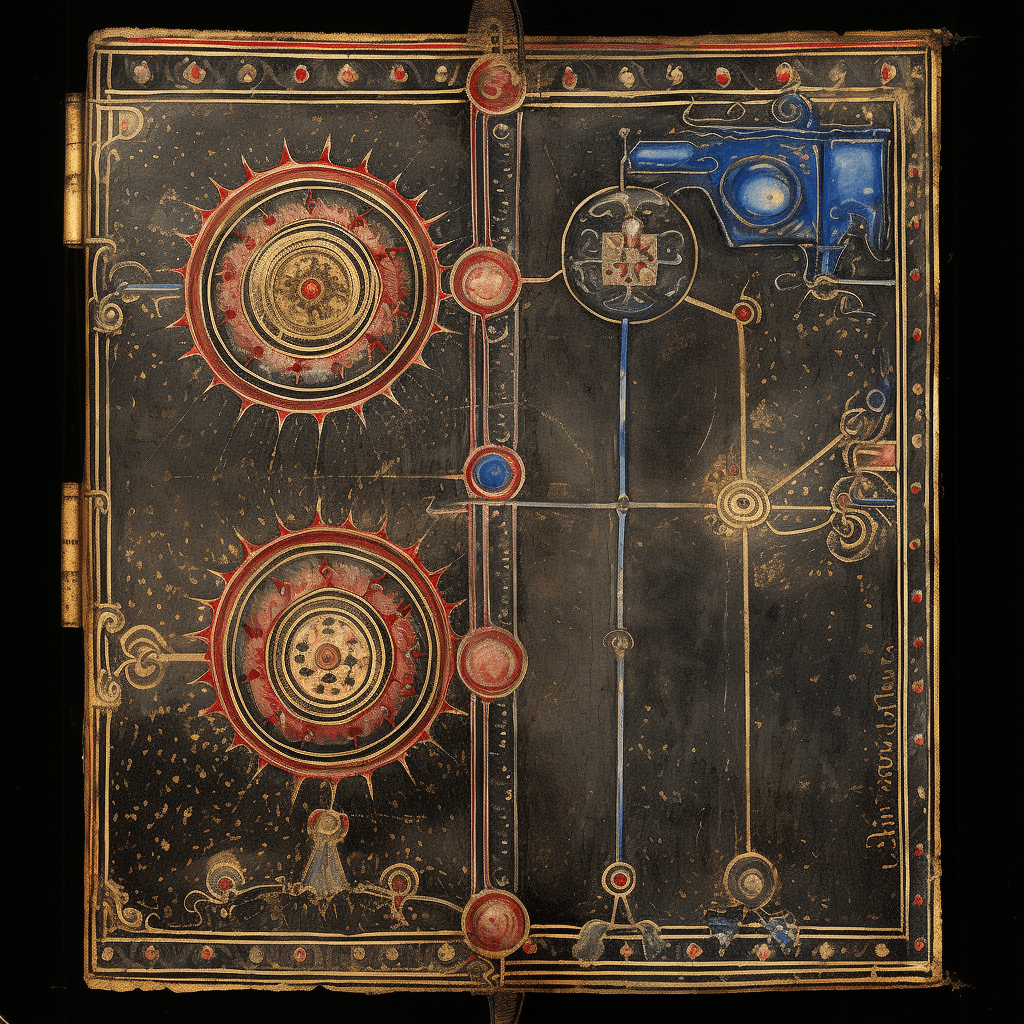Assignment
/imagine "scan of a medieval manuscript featuring a circuit with only one button and only two LEDs"
Week 01 assignment requires the circuit with one pushbutton and two leds to function in this cycle: (off, click, one LED, click, two LEDs, click, off…).
Final result demo
From sketch to breadboard
Final circuit connected on the breadboard:

Code
You can add code inside the code fences. The letter c after the three backticks means that the syntax highlighting will use the programming language c as the rules on how different parts of the text should be highlighted.
The main logic:
if (btnState == HIGH) {
switch(counter){
case 0:
digitalWrite(ledA, HIGH);
counter++;
Serial.print("One light! counter: "); // debugging purpose
break;
case 1:
digitalWrite(ledB, HIGH);
counter++;
Serial.print("Two lights! counter: ");
break;
case 2:
digitalWrite(ledA, LOW);
digitalWrite(ledB, LOW);
counter=0;
Serial.print("Lights off! counter: ");
break;
}
Serial.println(counter); // debugging purpose
}
After uploading the code, I tested the circuit and realised that the button value might be read multiple times for one press. Here is the Serial Monitor output:

Hence, I utilised the millis() and a delay time to monitor the timing of reading input and decide if the duration is long enough as one press. Here is the final working code:
// constant
const int btnPin = 2;
const int ledA = 12;
const int ledB = 13;
// variable
int btnState = LOW;
int lastBtnState = LOW;
int counter = 0;
unsigned long lastDebounceTime = 0; // the last time the output pin was toggled
unsigned long debounceDelay = 50; // the debounce time; increase if the output flickers
void setup() {
pinMode(ledA, OUTPUT);
pinMode(ledB, OUTPUT);
pinMode(btnPin, INPUT);
Serial.begin(9600);
digitalWrite(ledA, LOW);
digitalWrite(ledB, LOW);
}
void loop() {
int reading = digitalRead(btnPin);
if(reading != lastBtnState){
// reset the debouncing timer
lastDebounceTime = millis();
}
if ((millis() - lastDebounceTime) > debounceDelay) {
// whatever the reading is at, it's been there for longer than the debounce
// delay, so take it as the actual current state:
// if the button state has changed:
if (reading != btnState) {
btnState = reading;
if (btnState == HIGH) {
switch(counter){
case 0:
digitalWrite(ledA, HIGH);
counter++;
Serial.print("One light! counter: ");
break;
case 1:
digitalWrite(ledB, HIGH);
counter++;
Serial.print("Two lights! counter: ");
break;
case 2:
digitalWrite(ledA, LOW);
digitalWrite(ledB, LOW);
counter=0;
Serial.print("Lights off! counter: ");
break;
}
Serial.println(counter);
}
}
}
lastBtnState = reading;
}
And here is the serial monitor output for the code with debounce:



